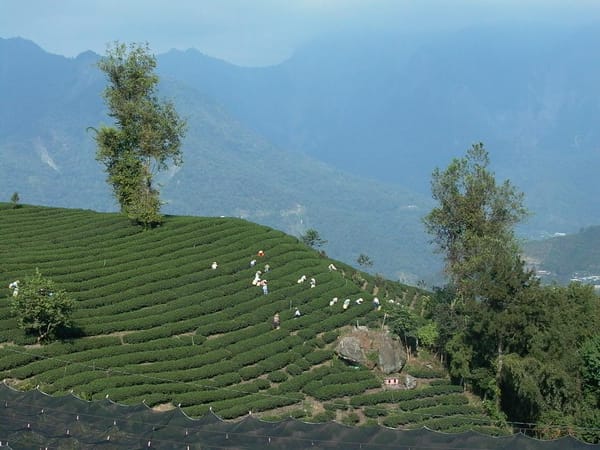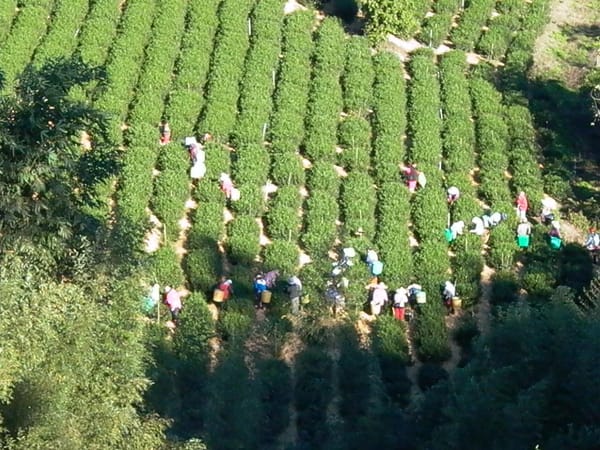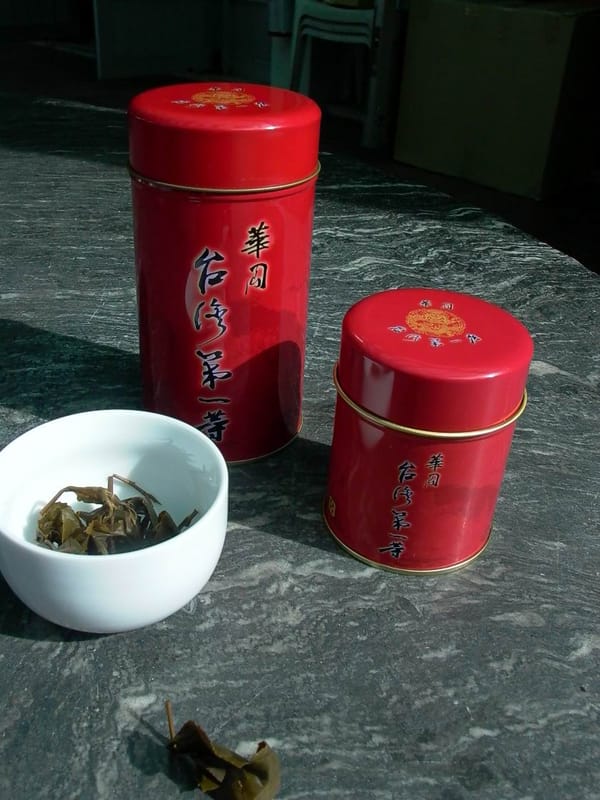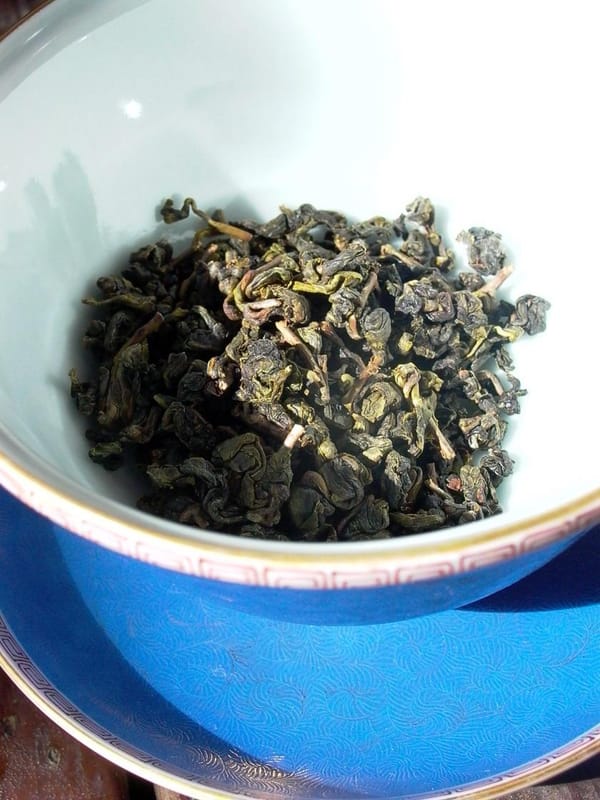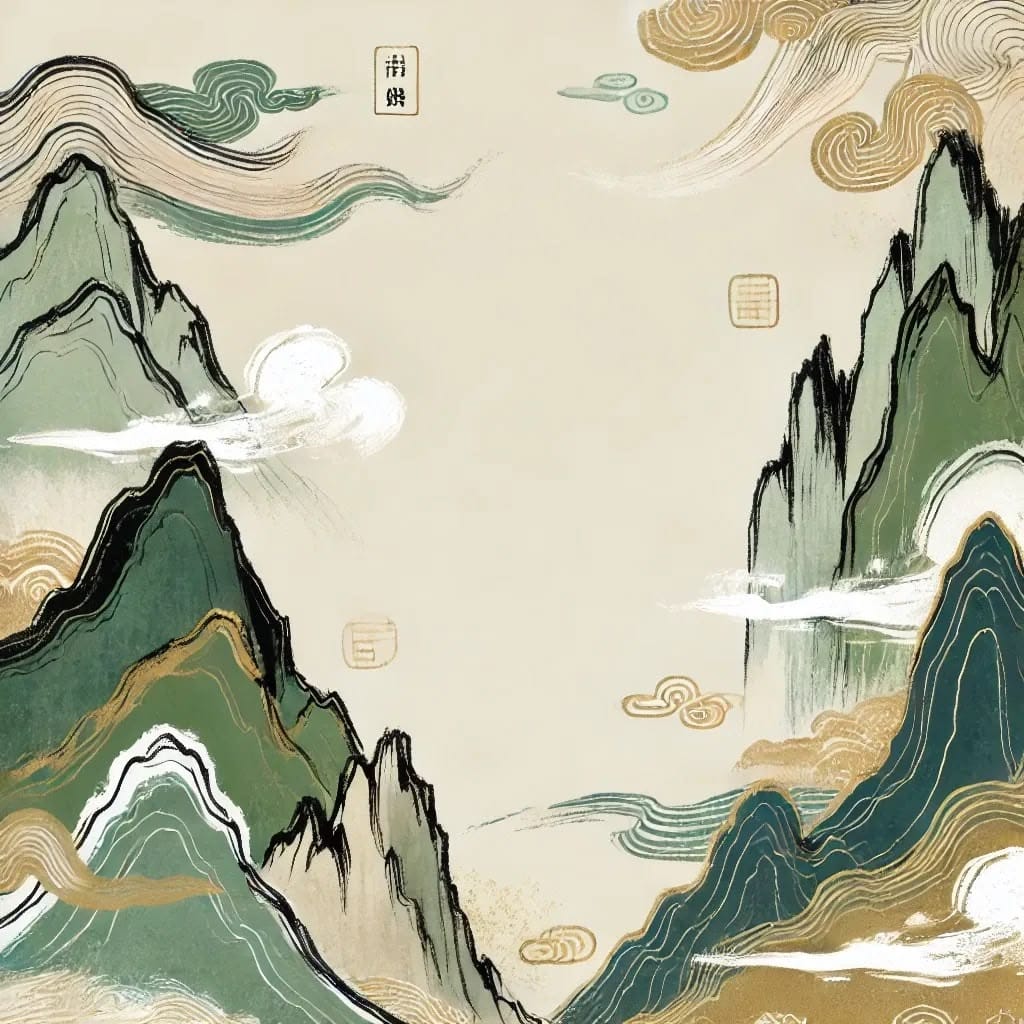In the world of Taiwanese tea, High Mountain Oolong and Dong Ding Oolong are two shining stars. One represents modern innovation at high altitudes, while the other carries the legacy of traditional craftsmanship. One captivates younger generations with its fresh aroma; the other wins over seasoned tea lovers with its rich aftertaste. During the "tea tectonic shift" of the 1980s, Dong Ding Oolong ceded its mainstream status, and High Mountain Oolong rose to claim the peak of the market.
The Rise and Fall of Historical Prestige
Dong Ding Oolong Tea is a classic in Taiwan’s tea history. As early as 1894, the Yunlin County Gazetteer recorded widespread tea planting on Dong Ding Mountain. Scholar Lan Ting-zhen praised the tea for its "unique fragrance, ability to relieve summer heat and bloating, making it an excellent product." A 150-year-old tea tree there—20 cm in diameter and as tall as a one-story building—still produces tea today. Local folklore says that Lin Fengchi, a successful candidate in the imperial examination, brought the tea back from Wuyi Mountain as a gesture of gratitude for a loan granted to his ancestor Lin Sanxian.
In the 1980s, Dong Ding Oolong reached a golden era. In 1979, Su Shi-tie released a premium half-jin (300g) pack for NT$800—a high price that set the standard and remains a dream brew for Dong Ding enthusiasts.
The 1980s also marked Taiwan’s entry into the high-altitude tea era. The term “High Mountain Oolong Tea” originated from Chen Jin-di’s story. In the 1970s, he ran an orchard in Lishan and supplied President Chiang Kai-shek with fresh pears annually. By chance, he introduced tea seedlings from Dong Ding, and unsure of what to name the resulting tea, he simply called it "High Mountain Oolong."
With fertile soils rich in organic matter, high mountain tea plantations quickly outshone their mid-altitude counterparts. High Mountain Oolong eventually replaced Dong Ding as the new benchmark of Taiwanese tea.
Terroir: The Core Differences
The most striking difference lies in elevation. Dong Ding Oolong is grown in Lugu Township, Nantou County, at altitudes of 700–800 meters. High Mountain Oolong, by contrast, is cultivated at elevations above 1,000 meters.
Higher altitudes bring cooler temperatures, significant day-night temperature differences, and frequent mists. The cooler nights slow down respiration while the sunny days encourage photosynthesis, helping the tea leaves store more nutrients. Cloud cover protects the leaves from harsh sunlight, allowing them to grow slower and develop finer textures.
Soils in high mountain tea gardens are also richer in organic matter. Since organic substances make up 90–95% of a tea plant’s dry mass, high levels of nitrogen, phosphorus, and potassium in these soils give High Mountain Oolong a richer chemical profile.
Key Differences in Processing Techniques
Another critical distinction lies in fermentation levels. Traditional Dong Ding Oolong is medium-fermented, giving it a fuller body, fruit-forward fragrance, and deep finish. High Mountain Oolong, however, favors light fermentation, emphasizing natural aromas and preserving more of the tea’s original polyphenols.
As market preferences evolved, the heavier flavors of Dong Ding gradually gave way to the fragrant, lightly fermented style of High Mountain Oolong. This shift defined mainstream tea culture for two decades and even influenced tea production in mainland China, where regions like Fujian began crafting "Taiwan-style" teas.
Comparing Quality and Characteristics
High Mountain Oolong is known for its floral, elegant aroma with notes reminiscent of mountain forests. Dong Ding Oolong, on the other hand, boasts rich fruitiness and a uniquely mellow fermentation fragrance.
Aged Dong Ding teas, with their heavier oxidation, highlight depth and complexity, offering an unforgettable experience for connoisseurs. High Mountain Oolong presents a sweet, smooth taste, with a distinct “mountain character” and fast, lingering aftertaste.
Dong Ding Oolong also excels in reusability—capable of being brewed eight times or more while maintaining an impressive extraction rate of around 24% per infusion.
Conclusion
High Mountain and Dong Ding Oolong teas represent two pivotal stages in Taiwan’s tea evolution. High Mountain Oolong wins the hearts of new generations with its aromatic freshness, while Dong Ding Oolong preserves the rich legacy of Taiwan’s tea craftsmanship. Each has its own charm: choose High Mountain Oolong for elegance, or Dong Ding for depth. The future of Taiwan’s tea industry lies in harmonizing innovation with tradition.

